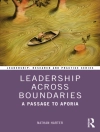Since 1995, USC’s Center for Effective Organizations (CEO) has conducted the definitive longitudinal study of the human resource management function in organizations. By analyzing new data every three years since then, the Center has been able to consistently chart changes in how HR is organized and managed, while at the same time providing guidance on how professionals in the field can drive firm performance. Global Trends in Human Resource Management, the seventh report from CEO, provides the newest findings about what makes HR successful and how it can add value to organizations today. Edward E. Lawler III and John W. Boudreau conclude that HR is most powerful when it plays a strategic role, makes use of information technology, has tangible metrics and analytics, and integrates talent and business strategies.
To adapt to the demands of a changing global marketplace, HR is increasingly required to span the boundaries between its function, the organization as a whole, and the dynamic environment within which it operates. This report tracks changes in a global sample of firms that shows how HR differs across Europe, the U.S., and Asia, providing an international benchmark against which to measure a company’s practice and shows how HR can adapt in a rapidly changing landscape.
قائمة المحتويات
Contents and Abstracts
1
What HR Needs to Do
chapter abstract
The world of work is changing rapidly and dramatically. A strong case can be made that the HR function in organizations needs to change as well. It needs to take a more strategic role and develop new talent management approaches. If it doesn’t change, it could end up as an administrative function that manages an information technology driven HR system. If it changes it can become a driver of organizational effectiveness and business strategy.
2
The Role of HR
chapter abstract
HR has not significantly changed how it allocates its time since 1995. It remains a function that spends the majority of its time on services, controlling, and record keeping. This is true in the United States and in the other countries studied. HR executives perceive that they spend more time on strategic partnership, but the data show little change. Data on management approaches and strategy provide one likely reason why there has not been much change. Bureaucratic and low-cost organizations have HR functions that spend the most time on services, controlling, and record keeping. Management approaches and strategies such as innovation and sustainability have a more strategic HR role, but are only now gaining ‘market share.’
3
HR’s Engagement with Boards
chapter abstract
HR has a limited role when it comes to supporting boards in all countries. When it does provide support it is typically in executive compensation and succession. HR Board support is more frequent and covers more diverse arenas in high-involvement and sustainable management organizations, and it is rarer and less extensive in bureaucratic and low-cost-operator organizations. Providing support to boards is clearly an area where HR could do more, which would lead to a larger role in the formulation and implementation of business strategies.
4
Business Strategy and HR
chapter abstract
In most organizations, HR remains a limited contributor to the business strategy, development, and implementation process. The 2013 results are remarkably similar to the 1998 results. Despite massive changes in the business world since 1998, the data suggest that HR has changed little. Yet, the direction of business changes would seem to lead to HR being more of a strategic partner. The data show that HR executives are active in some areas that directly affect the strategic direction of organizations, such as human capital recruitment and development through organization design and strategy development. Yet, the role of HR is too often separated or subsequent to strategy formulation. The challenge for HR is to evolve toward a balance of activities that support strategies after they are developed as well as direct involvement in strategy formulation, as a full partner in the high-value-added area of business strategy development and implementation.
5
HR Decision Science
chapter abstract
Decisions about human capital are a vital outcome of HR functional leadership. HR executives rate human capital decision making in their organizations as moderately effective, both inside and outside of HR. The HR decision-science facility of organizations varies with the strategy they pursue. Decision support and quality are more sophisticated in high-involvement and sustainable management approaches. More sophisticated HR decision support and quality is correlated with HR’s role in strategy, suggesting the strategic value of sophisticated human capital decisions. There is room for improvement, as the average ratings of decision quality in 2013 are near the midpoint of the rating scale. Yet, survey results dating from 2007 show the positive association between an organization’s decision-science capacity and HR’s role in strategy, particularly in organizations pursuing management approaches and strategies that are workforce-intensive and high-involvement.
6
HR Organization
chapter abstract
The design of the HR organization has shown some change over time. The data show significant growth in service units and centers of excellence, and these design elements are related to HR’s strong strategic partner role. There is a trend toward less variation in HR practices across business units and a greater emphasis on HR self-service. Yet, other elements that relate to strong strategic partnership remain stubbornly unchanged, including career movement of individuals into and out of HR and adopting information technology. The relationships between the characteristics of the HR organization and HR’s role in strategy suggest what HR needs to do to become more of a strategic partner: establish centers of excellence, use joint task forces, use information technology, and develop HR talent. HR leaders plan to use more teams, and improve their efficiency but these design elements also remain stubbornly unchanged so far.
7
Changes in HR Activity
chapter abstract
HR executives report their organizations are expanding almost all HR activities, suggesting that HR is increasingly seen as a worthy investment and a determinant of organizational effectiveness and competitive advantage. Increased activity in design and organizational development are particularly strong with greater strategic focus on knowledge and innovation. Organization design and development is an area that has not always been a focus of HR, despite its close relationship to organizational performance and business strategy. Providing expertise in this area appears to be a way for HR to become more of a business partner, particularly in information- and knowledge-based business.
8
Measuring Efficiency, Effectiveness, and Impact
chapter abstract
HR metrics and analytics remain uniformly rated at or below the midpoint of usage, and yet are correlated with HR’s strategic role. This suggests they remain underdeveloped and underused. That said, the strongest relationship with HR’s strategic role is with traditional efficiency and effectiveness measures, not decision-focused impact measures. The path forward appears to be for HR to begin by enhancing traditional measurement areas and evolve toward more advanced impact measures as constituents become more familiar and sophisticated. There are also systematic variations in how HR measures are used, and how they relate to HR’s strategic role. Organizations that emphasize high-involvement management approaches show greater use of impact measures, suggesting an organization’s management approach affects receptivity to sophisticated HR measurement.
9
The Outcomes of HR Metrics and Analytics
chapter abstract
HR measurement systems emerge as moderately effective, with slight but notable effectiveness improvement since 2007. Effective HR measurement continues to be consistently and strongly related to HR’s strategic role, so improvement in measurement effectiveness is linked to a more meaningful HR role in business strategy. Yet, it appears that measurement effectiveness in traditional HR functional and operational areas relates more strongly to HR’s strategic role than more advanced decision-support and impact measures. The findings reinforce the conclusion from prior surveys—that the potential for HR metrics and analytics to contribute to HR’s strategic value is significant, while the perceived effectiveness levels remain stubbornly moderate. The findings also suggest that strategic partnership is reinforced through a balanced approach that combines effectiveness in logic, analytics, measures, and process.
10
HR’s Role in Sustainability
chapter abstract
Across all countries, HR is not very active in sustainability activities but HR executives feel it should be significantly more active. HR executives feel it should provide more support in the design of sustainability programs, organization design, change management, and the way business is conducted. HR executives also believe that sustainability should be built into such HR processes as selection, rewards, and talent development. HR is more involved in sustainability activities in organizations with a stronger strategic focus on sustainability. When HR is active in sustainability, it is much more likely to play a significant role in strategy.
11
Outsourcing HR
chapter abstract
HR outsourcing shows little increase in recent years. Organizations may be missing an opportunity to improve their HR activities. Outsourcing can allow access to knowledge and expertise that they lack and cannot develop, and create economies of scale. Despite these potential advantages, the slow growth of outsourcing may be due to challenges in achieving sustained cost and quality advantages. The findings show that HR executives rate moderate outsourcing as most effective. While it is popularly stated that outsourcing creates resources to enhance strategic partnership, our results show only a slight relationship between the amount of outsourcing and HR’s strategic role. Outsourcing might grow in the future but its failure to grow during a historically severe recession makes it difficult to predict what might cause it to increase.
12
Information Technology in HR
chapter abstract
Information technology is still used most effectively for the traditional purposes of providing transactional tools for HR administration. There is slow movement toward more integrated HR information systems that improve decision making, but HRISs are not rated as more effective in 2013 than they were in 2001, and they are rated as only moderately effective overall. Yet, the drumbeat of big data and analytics, and the promise of technology-enabled efficiencies continue to raise expectations about what HRIS can and should deliver. HRISs are clearly most effective when they fit the strategy of an organization. They are particularly likely to be perceived as successful in companies with knowledge and information-based strategies. The strongest finding is that HRIS’s are perceived as more effective the more things they do, and the more services they perform.
13
HR Skills
chapter abstract
The highest rated skills in importance for HR managers are business understanding, interpersonal dynamics, and change management. These have not changed significantly over time. Yet, HR professionals continue to suffer from a skills deficit that limits their role in business strategy development and implementation. There is only moderate satisfaction with HR skills. No skill rating is higher than 3.9 on a 5-point scale, and that level was reached only by one of the most traditional HR capabilities — interpersonal skills. Of particular concern are the relatively low ratings given to business partner skills, since they are most strongly related to HR’s significant role in strategy. A hopeful sign is an improvement in some business partner skills. Yet, there is much work to be done to enhance HR skills and to develop a common understanding about the required skill level to have an effective HR organization.
14
Effectiveness of the HR Organization
chapter abstract
The HR function in organizations is rated as only moderately effective, and that rating has not changed in over a decade. HR executives continue to report that HR is most effective in traditional arenas such as delivering HR services and being an employee advocate. The data show there are many important areas where HR falls short. HR is not rated highly in business and strategy effectiveness. This may be due to HR’s low rating on analyzing HR and business data. HR executives say that a strong emphasis needs to be placed on HR’s role as a business partner and on improving decisions about human capital, areas of relatively low effectiveness for HR. There is a tremendous opportunity for HR improvement in areas that are related to the strategic involvement of the HR function. This potential remains untapped, as HR has not improved its effectiveness since 1995.
15
Determinants of HR Effectiveness
chapter abstract
There are a number of relationships between the effectiveness of the HR function and the way it is organized, managed, and staffed. Overall, the findings tell an important story. HR effectiveness is associated with a wide array of HR activities, structures, systems, and skills that are within the control of HR. HR can do a lot to make HR more effective. Yes, it needs to be sure its administrative processes work well, but its best opportunities for improvement appear to be in the business partner role and in strategy. Unfortunately, these are also the areas that emerge as least effective and advanced in most HR organizations.
16
Determinants of Organizational Performance
chapter abstract
Organizational performance is related to how HR is organized, managed, and staffed, and how it spends its time. The amount of time spent on strategic issues is positively related to organizational performance. Having a human capital strategy that is integrated with the business strategy is also associated with high performance. Having an integrated HRIS system, employing metrics and analytics that measure the impact and quality of HR programs, and processes and talent decisions are associated with organizational performance. High performance organizations also have a high level of decision science sophistication with respect to talent and its impact on organizational performance. Overall, high-performing organizations have more effective, strategic and sophisticated HR. The typically moderate levels of HR activities and effectiveness in these areas suggests significant untapped potential for HR to enhance organizational performance.
17
How HR Has Changed
chapter abstract
HR wants to be a strategic partner and the door is open because of the growing recognition that talent is a key determinant of an organization’s effectiveness. But HR cannot get through the door in many organizations, much less get a seat at the table. The good news is that there is a pattern of HR activities, skills, and relationships that are associated with HR effectiveness and a stronger strategic role. They include approaches to designing the HR function and improving the skills of HR managers and executives. Difficult as it may be to make them happen, the changes that are required emerge consistently and are easy to identify.
18
What the Future of HR Should Be
chapter abstract
The opportunity for HR to add value is great, but it remains more promise than reality. HR executives need to develop new skills and knowledge, while maintaining effectiveness in traditional human resource management and administrative activities. The results of this study show that doing the basics well remains the platform on which the HR organization needs to build its role as a business partner. However, HR must also make strategic contributions to the organization. As organizations adopt new definitions of sustainable effectiveness that include social and environmental impacts and face the need to embrace constant and dynamic change, there is an increasing necessity for a new business model for HR, and this necessity has been accepted and acknowledged by most HR executives. Yet, the reality of today’s human resource profession appears to reflect only the beginning of the changes that will put that new model in place.
عن المؤلف
Edward E. Lawler III is Distinguished Professor of Business and Director of the Center for Effective Organizations at the University of Southern California. John W. Boudreau is Professor and Research Director of Center for Effective Organizations at the University of Southern California.












